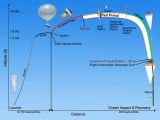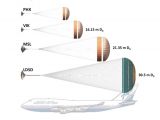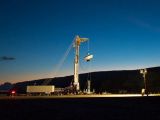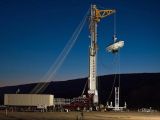This past Tuesday, June 9, NASA at long last launched its Low-Density Supersonic Decelerator on a test flight that had it reach an altitude of 180,000 feet (nearly 55,000 meters) only to come tumbling down and crash the waters of the Pacific Ocean not long after.
NASA's Low-Density Supersonic Decelerator, basically a donut-shaped flying saucer of sorts, is designed to create drag and, in doing so, slow down spacecraft trying to make a safe landing on the surface of one planet or another.
The US space agency expects that sometime in the not-so-distant future a Low-Density Supersonic Decelerator like the one they tested just the other day will help successfully deliver cargo and maybe even a crew of astronauts to the Red Planet, a.k.a. good old Mars.
The space vehicle performed well, but not exceptionally
Yesterday's adventure was the second test flight for NASA's Low-Density Supersonic Decelerator. The space vehicle, shown in the images and video accompanying this article, launched at 7:45 a.m. from the US Navy's Pacific Missile Range Facility on the island of Kauai.
A balloon carried it to an altitude of 120,000 feet (about 36,600 meters), after which an onboard rocket fired up and delivered it to a height of 180,000 feet (roughly 55,000 meters). Then, the flying saucer was simply allowed to fall back to Earth.
To slow the craft's descend, mission scientists first deployed breakthrough technology dubbed the Supersonic Inflatable Aerodynamic Decelerator. Plainly put, they had a donut-shaped balloon fitted around the space vehicle's body inflate.
Moments later, the flying saucer's custom made 100-foot-wide (30-meter) parachute was also deployed in an attempt to further slow it down and help the space vehicle make a smooth landing in the Pacific Ocean. Tough luck though, as the colossal parachute ruptured.
“LDSD's [Low-Density Supersonic Decelerator] SIAD [Supersonic Inflatable Aerodynamic Decelerator] deployed & inflated. Chute deployed, but did not inflate. We'll study data from this test to learn and improve,” NASA said in a statement.
The US space agency plans another test flight for 2016
Scientists at NASA say that they will now look at the data concerning yesterday's test flight of the space agency's Low-Density Supersonic Decelerator and try to figure out what went wrong and why it was that the spacecraft's parachute failed to deploy properly.
The goal is to use this data to build another parachute that will behave as expected of it. Should all go well, the space agency will launch its Low-Density Supersonic Decelerator on another test flight sometime next year.
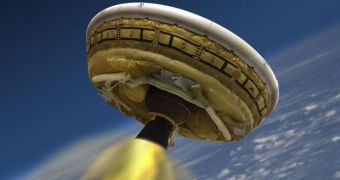
 14 DAY TRIAL //
14 DAY TRIAL // 



